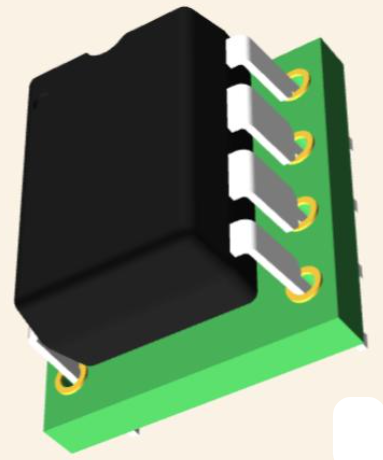Power Splitters, Dividers, and Combiners: Essential Components for Signal Distribution
Power splitters, dividers, and combiners are indeed essential components for signal distribution in RF, microwave, and communication systems. They manage how signals are split into multiple paths or merged from multiple sources, playing a critical role in everything from antenna arrays to test setups. While they share some overlap with directional couplers (and often get confused with them), their design and purpose are distinct. Let’s unpack their functions, types, and real-world significance in a clear, no-nonsense way.

What They Do
Power Splitters/Dividers: Take one input signal and split it into two or more outputs, usually with equal or controlled power ratios.
Goal: Distribute a signal across multiple paths (e.g., antennas, receivers).
Example: Splitting a 5 GHz Wi-Fi signal to feed two access points.
Power Combiners: Reverse the process—merge multiple input signals into one output.
Goal: Aggregate signals (e.g., from multiple transmitters or antennas).
Example: Combining signals from a MIMO array into a single receiver.
The terms “splitter” and “divider” are often interchangeable, though “divider” sometimes implies a more technical, engineered split (e.g., unequal ratios), while “splitter” suggests simplicity. Combiners are just splitters flipped around, but isolation and phase matter more in their design.
Types and Characteristics
Resistive Power Splitters/Dividers
Equal split (e.g., 3 dB loss per port, plus 3 dB from division).
Broadband (DC to tens of GHz).
No isolation between outputs (signals can crosstalk).
Structure: A star or delta network of resistors (e.g., 50 Ω system with 16.7 Ω resistors for a 2-way split).
Traits:
Use: Simple test setups or low-cost signal distribution (e.g., splitting a cable TV signal).
Downside: High insertion loss (6 dB for 2-way), no directionality.
Wilkinson Power Divider
Equal split (3 dB per port), low loss (~0.1-0.5 dB beyond division).
Good isolation (20-30 dB between outputs).
Narrowband unless multi-sectioned.
Structure: Transmission lines (usually λ/4lambda/4λ/4) with a resistor between outputs for isolation.
Traits:
Use: RF/microwave systems like 5G antenna arrays or phased arrays at 28 GHz.
Downside: Frequency-specific; resistor limits power handling (watts).
Hybrid Couplers (as Dividers/Combiners)
Equal split (3 dB), 90° or 180° phase shift.
High isolation (>20 dB), low loss (<0.5 dB).
Narrowband (10-20% of center freq).
Structure: 3 dB couplers (e.g., branch-line, rat-race) with four ports, two used for output/input.
Traits:
Use: Beamforming in radar or combining balanced amplifiers at 10 GHz.
Downside: Unused port needs termination; bulky for some apps.
T-Junction Dividers
Equal or unequal split based on geometry.
No isolation, broadband potential.
Loss depends on impedance match.
Structure: Simple Y-shaped split in a transmission line or waveguide.
Traits:
Use: Basic microwave power division (e.g., 2-way split in a 12 GHz link).
Downside: Reflections and crosstalk unless matched perfectly.
Reactive Splitters
Low loss (no resistors), equal split.
Narrowband, high power capable.
Poor isolation.
Structure: Capacitors, inductors, or transformers in a network.
Traits:
Use: High-power RF like broadcast transmitters at 100 MHz.
Downside: Limited frequency range, sensitive to load changes.
How They Compare to Directional Couplers
Splitters/Dividers: Focus on equal or ratioed signal distribution to all outputs. No inherent directionality (except hybrids).
Couplers: Sample a specific fraction (e.g., 10 dB) with high directivity, prioritizing monitoring or unequal splits.
Overlap: A 3 dB hybrid can act as both, but a Wilkinson divider won’t sample signals directionally.
Performance in Signal Distribution
Insertion Loss: Resistive (6 dB for 2-way) vs. Wilkinson/hybrid (<0.5 dB + 3 dB split). Critical for signal strength in chains.
Isolation: Wilkinson and hybrids win (20-30 dB), vital for multi-antenna systems to avoid interference.
Bandwidth: Resistive is widest, hybrids narrowest—pick based on freq range (e.g., 2-18 GHz vs. 5 GHz).
Power Handling: Reactive and waveguide handle kW; resistive and microstrip top out at watts.
Phase Control: Hybrids offer 90°/180° shifts for beamforming; others don’t care.
Real-World Applications
5G Base Stations: Wilkinson dividers split power across antenna elements, maintaining phase for MIMO.
Radar: Hybrid combiners merge returns from array elements, preserving directionality.
Test Labs: Resistive splitters feed multiple analyzers from one source, cheap and broadband.
Satellite: Waveguide T-junctions divide high-power signals (10 kW) to redundant transponders.
Email us
Warning: Undefined variable $pronamepx in D:\wwwroot\www.resistorsupplies.com\moban\en_inc\ziliao.php on line 67
Fatal error: Uncaught TypeError: count(): Argument #1 ($value) must be of type Countable|array, null given in D:\wwwroot\www.resistorsupplies.com\moban\en_inc\ziliao.php:67 Stack trace: #0 D:\wwwroot\www.resistorsupplies.com\ziliao.php(146): include() #1 {main} thrown in D:\wwwroot\www.resistorsupplies.com\moban\en_inc\ziliao.php on line 67
